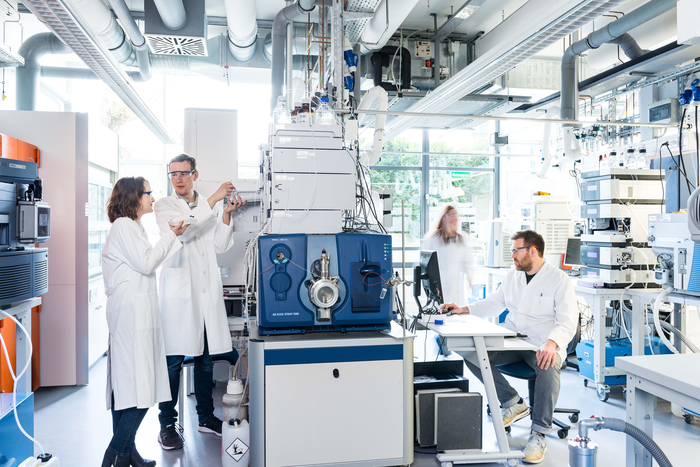Breast milk is the first food that babies consume. Various studies have suggested that the “taste experience” in early childhood influences eating behavior in adults. Unlike standardized infant formula, natural milk does not taste and smell the same every day. The differences are largely due to the maternal diet.

Credit: C. Schranner/Leibniz-LSB@TUM
Breast milk is the first food that babies consume. Various studies have suggested that the “taste experience” in early childhood influences eating behavior in adults. Unlike standardized infant formula, natural milk does not taste and smell the same every day. The differences are largely due to the maternal diet.
No one-to-one transfer
However, the taste and aroma of food consumed by the mother are not transferred one-to-one to her milk. Research has already shown that odor and taste active substances from garlic or coffee partly enter the mother’s milk as an odor active metabolic product, while flavors from fish oil or nursing tea were of little to no significance in this respect.
The extent to which pungent substances from chili, ginger, or pepper are found in breast milk has been even less researched than aroma and taste substances. For this reason, a scientific team led by TUM has now investigated whether these substances are transferred from food to breast milk and if so, which ones.
Piperine detectable after just one hour
Through extensive mass spectrometric analyses, the team has shown that already one hour after consumption of a standardized curry dish, piperine is detectable in breast milk for several hours. “The observed maximum concentrations of 14 to 57 micrograms per liter were about 70- to 350-fold below the taste perception threshold of an adult,” says Professor Corinna Dawid, who heads the Chair of Food Chemistry and Molecular Sensory Science at TUM commissarial for Professor Thomas Hofmann.
Roman Lang, who was initially involved in the study as a scientist at TUM and later at the Leibniz Institute for Food Systems Biology (LSB) adds, “It seems rather unlikely to us that the infants consciously perceive the sharpness. Nevertheless, it is conceivable that regular, low-threshold activation of the “pungent receptor” TRPV1 could help to increase tolerance for such substances later on.”
Pungents from ginger or chili as well as the secondary plant compound curcumin, which is also abundant in curry, did not enter milk, according to the research. “We were particularly surprised by the latter, since piperine is supposed to significantly increase the bioavailability of curcumin according to the results of other studies,” reports Roman Lang, who heads the Biosystems Chemistry & Human Metabolism research group at the LSB.
“These observations were made in collaboration with our partners from the Friedrich-Alexander-University Erlangen-Nuremberg, the Fraunhofer Institute for Process Engineering and Packaging IVV, and the LSB. Continued exploration will help us to better understand both the emergence of food preferences and the metabolic processes that play a role in the transfer of bioactive food ingredients into breast milk,” says TUM-Professor Corinna Dawid.
Journal
Molecular Nutrition & Food Research
DOI
10.1002/mnfr.202100508
Subject of Research
Not applicable
Article Title
Dietary piperine is transferred into the milk of nursing mothers
Article Publication Date
11-Oct-2021




